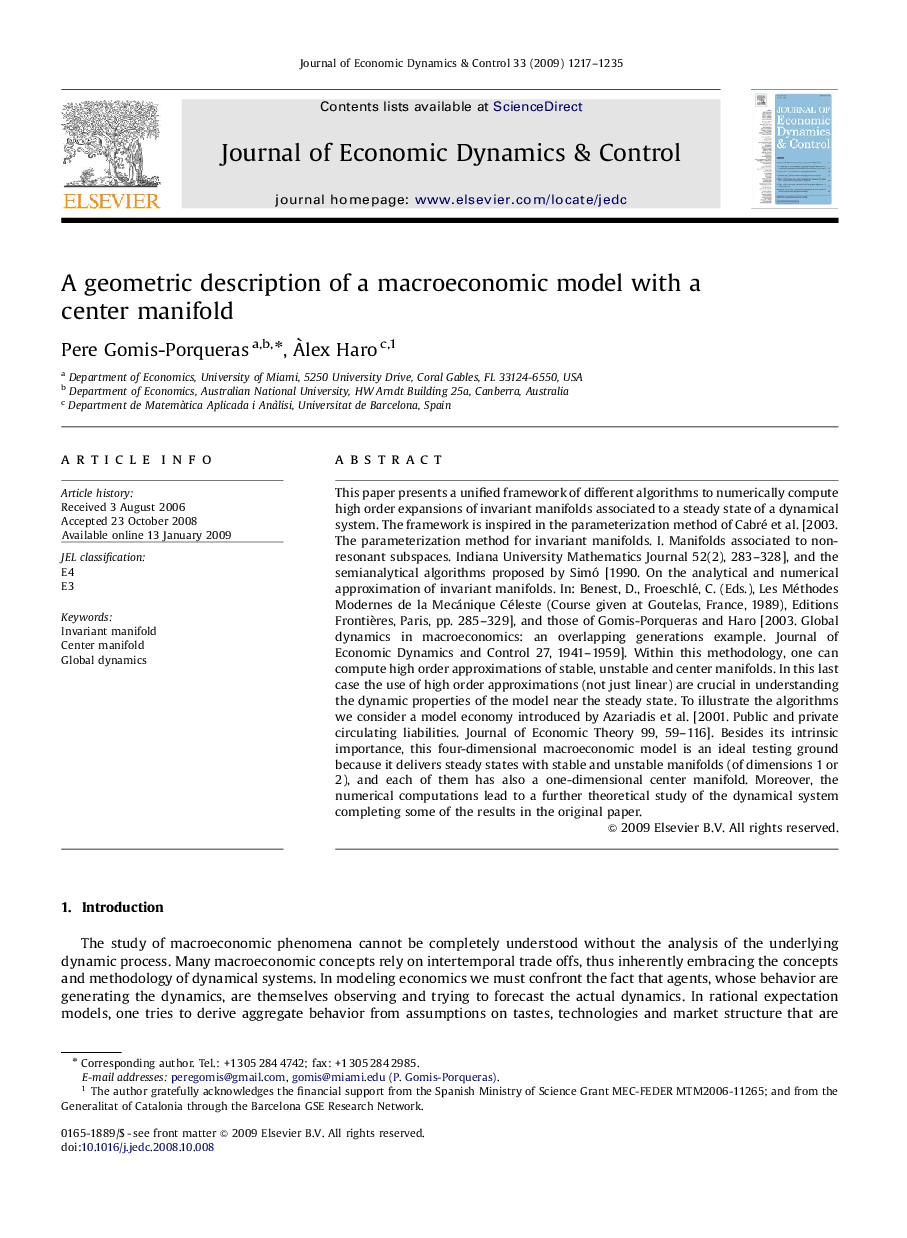| Article ID | Journal | Published Year | Pages | File Type |
|---|---|---|---|---|
| 5099135 | Journal of Economic Dynamics and Control | 2009 | 19 Pages |
Abstract
This paper presents a unified framework of different algorithms to numerically compute high order expansions of invariant manifolds associated to a steady state of a dynamical system. The framework is inspired in the parameterization method of Cabré et al. [2003. The parameterization method for invariant manifolds. I. Manifolds associated to non-resonant subspaces. Indiana University Mathematics Journal 52(2), 283-328], and the semianalytical algorithms proposed by Simó [1990. On the analytical and numerical approximation of invariant manifolds. In: Benest, D., Froeschlé, C. (Eds.), Les Méthodes Modernes de la Mecánique Céleste (Course given at Goutelas, France, 1989), Editions Frontières, Paris, pp. 285-329], and those of Gomis-Porqueras and Haro [2003. Global dynamics in macroeconomics: an overlapping generations example. Journal of Economic Dynamics and Control 27, 1941-1959]. Within this methodology, one can compute high order approximations of stable, unstable and center manifolds. In this last case the use of high order approximations (not just linear) are crucial in understanding the dynamic properties of the model near the steady state. To illustrate the algorithms we consider a model economy introduced by Azariadis et al. [2001. Public and private circulating liabilities. Journal of Economic Theory 99, 59-116]. Besides its intrinsic importance, this four-dimensional macroeconomic model is an ideal testing ground because it delivers steady states with stable and unstable manifolds (of dimensions 1 or 2), and each of them has also a one-dimensional center manifold. Moreover, the numerical computations lead to a further theoretical study of the dynamical system completing some of the results in the original paper.
Related Topics
Physical Sciences and Engineering
Mathematics
Control and Optimization
Authors
Pere Gomis-Porqueras, Ãlex Haro,
